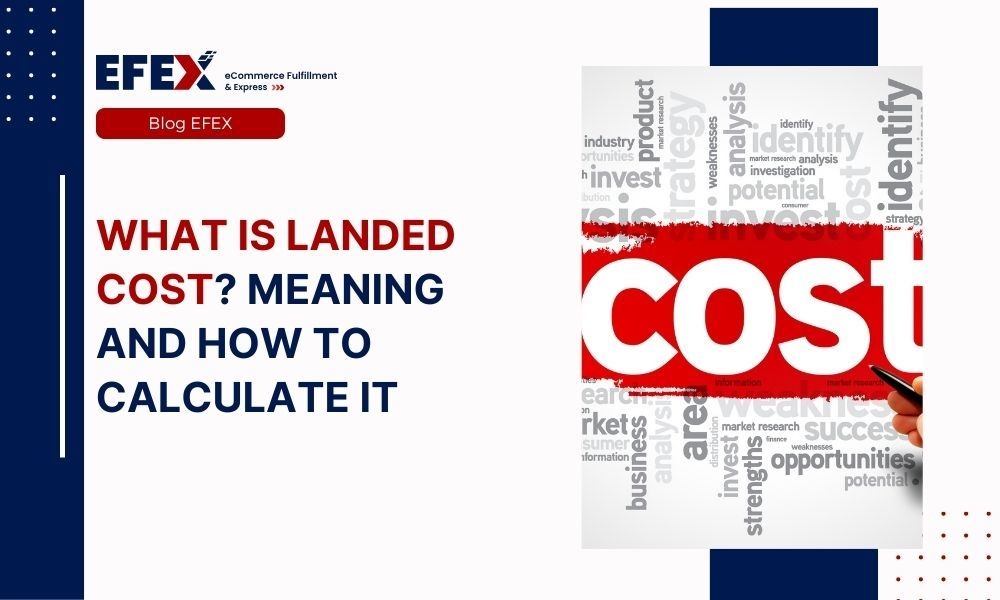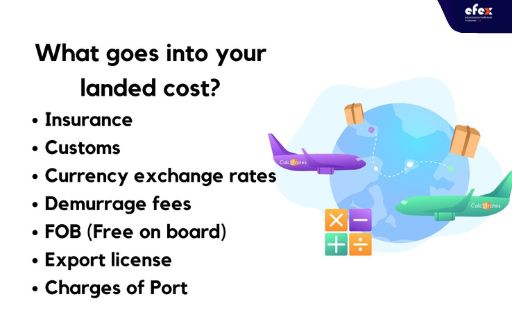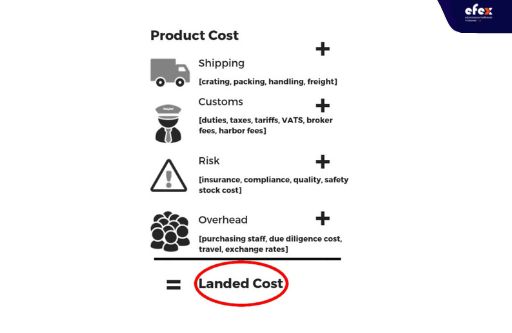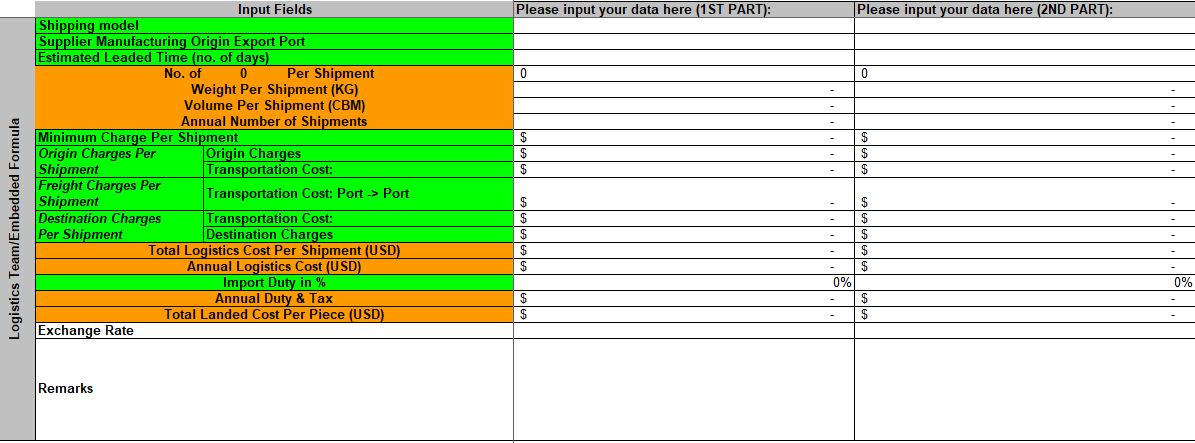
More Helpful Content
The price of freight as well as duty on commodities purchased abroad can be really considerable for businesses participating in importing. Your finance department must record all costs for businesses linked with every product when establishing a fully realized cost of the product in order to sustain profit margins.
Freight, as well as duty expenses, are examples of expenses that must be included in the core product cost, affecting numbers like the cost of sales. Manually processing this adds to your back-office workload.
So, automating these estimates is far more preferable, a lot easier, and provides much more exact "landed cost" — or actual expenses — for your company.
The full cost of a product or delivery after it has reached a buyer's doorstep is known as the landed cost. The landed cost comprises the product's initial price, as well as inland and maritime shipping expenses, customs, taxes, duties, insurance, tariffs, currency conversion, packaging, handling, as well as payment fees.
All of these expenditures are included in the value of the products obtained. Tracking the whole item cost assists in determining optimal sales pricing and the real margin for each item. Even third-party shipping or import vouchers obtained after a purchase voucher should be refunded back to item costs retrospectively.
👉 Read More: What Is Universal Product Code And How To Get It
Let's take a deeper look at the various expenses that go into calculating landing costs. It's crucial to keep in mind that not all of the charges listed below will apply to your company or to every foreign delivery you send or receive.

It is critical to ensure your goods are in good condition. It safeguards you against products that are lost, stolen, or destroyed. However, the cost is determined by the type and value of the items being sent
Importing and exporting commodities are subject to various taxes and rules in each nation. Customs-related fees like taxes and tariffs can be expected, but visit Trade.gov for further information.
Considering the flexibility of exchange rates before setting prices of goods pays off in the long term. Currency exchange rates are the bane of small company owners.
Shipping companies typically levy demurrage costs for containers that remain inside a terminal or port after the free time limit has expired. The longer the containers are on site, the higher the costs go.
In spite of not a fee, FOB has an impact on your purchase and, as a result, your shipping costs. FOB refers to who is responsible for things that are destroyed during shipment. As a result, taking this into consideration when choosing prices is a good idea.
While 95 percent of all commodities exported from the United States do not require an export license, do your research before sending them abroad. Begin by finding the Export Control Classification Number (ECCN) for your goods, since this will reveal license requirements and, possibly, expenses.
Because port prices vary based on the product's location, related fees vary as well. Earlier or later port fees, demurrage fees, and even cancellation fees may be incurred by shippers.
The goal of estimating your entire landed cost is to uncover both visible and hidden expenses in your supply chain. Knowing a product's real cost will help in decision-making about how to deliver things to the end customer for the least amount of money.
For example, if you have a product that is created in several nations and you just consider the lowest net ordering cost, you may wind up spending more money than necessary. Let's look at how earnings are computed with and without the landing cost using the following example:
No landed cost:
Including landed cost:
As you can see from the example above, a landed cost informs you of your actual earnings. In reality, assessing the landed cost, in this case, indicates that we have not only undervalued our earnings but are also making a loss on every transaction.
👉 Read More: What Is Demand Variability And How To Reduce
Considering your landed cost allows you to see how much it costs to deliver an order to a client (covering hidden or frequently overlooked charges) and can help you increase your earnings.

Transportation expenses, taxes, customs. tariffs, and a range of other things that may be termed hidden costs must all be addressed. Your decision-making will be smoother if you have a clearer knowledge about the amount of money your items truly cost.
You might be making decisions relying on inadequate facts if you don't know your overall landed cost. You'll have a better understanding of your financial success if you know your overall landing cost.
You'll be able to view the actual costs of things and come up with solutions to reduce them. This offers you a better understanding of the expenses and cost trade-offs connected with changing their supply chain. In the global economy today, automating landing cost estimates is critical.
Nobody has time to do the calculations by hand, and also no company owner wants to lose money. Inventory efficiency is among the most crucial locations where your bottom line seeps away, particularly when it comes to determining precise landing costs, aside from your staff.
👉 Read More: Reorder Point (ROP): Formula and How to calculate it
Importing products from other nations should increase your profit, not decrease it if your company is involved in global commerce.
If you try to participate in global trade, getting the landing cost correct is crucial; nobody really wants to lose clients (because of overestimating expenses) or revenues (forecasting costs too low).
The great news is that current business technology is continuing to expand worldwide markets for developing businesses, particularly e-retailers that rely on imported items.
You can more properly estimate your overall landing cost after you know the relevant costs. Only include those that are important to each overseas shipment, as no two are the same. You will not be charged an export licensing fee if you are not exporting products. Likewise, if storage isn't needed, you might not have to consider demurrage charges. Evaluate the following key elements when calculating these landed costs:
You can change product price and delivery expenses after adding up the cost per unit, taxes, tariffs, carrier fees, and customs, as well as insurance and processing fees. The formula for landed costs:

Add customs, which comprises all tariffs, taxes, and levies imposed by the country's rules, after accounting for goods and delivery expenses. Then there's a risk, which is the expense of safeguarding your investment, which could include things such as compliance, insurance, and quality assurance.
Overhead also includes expenses such as payment processing, currency exchange, and bank charges.
A hypothetical use of this formula is shown below. Let's say you bought 1000 products from a source for $20 each.
The duty is 1%, or $0.20 per item ($20 multiplied by 0.01). The cost of shipping is $500 ($500/1000 units), or $0.5 for each item. And, insurance is $200 per customer order plus an additional $20, so your insurance cost per item is $200/1000 + $20, or $20.2.
In addition, there is a $2 payment processing cost per unit. Total landing cost: $20 (product) + $0.5 (per-item shipping) + $0.2 (duties) + $20.2 (insurance) + $2 (processing charge) = $42.9 per unit.
Even though determining landed costs might be challenging, there are a few approaches you can use. To assess their overall landed cost, many organizations use spreadsheets or internally built software. Third-party organizations, such as supply chain experts or other supply chain professionals, can also assist you.
Besides, commercial solutions, such as ERP systems, supply chain design programs, transport management systems, and so on, are also available to assist you to calculate the formula. More tools are including the functionality to allow calculations as the value of this equation increases.
If you are a small business, an Excel spreadsheet will be perfect for you. Here’s our template on how to compute landed cost. Download it here.

👉 Read More: Backorder Cost: Meaning, Importance and Formula
Knowing your landed cost is essential for determining your profitability. If you don't include landed costs in your profit calculations, you might be losing out on important data and jeopardizing your company's future.


